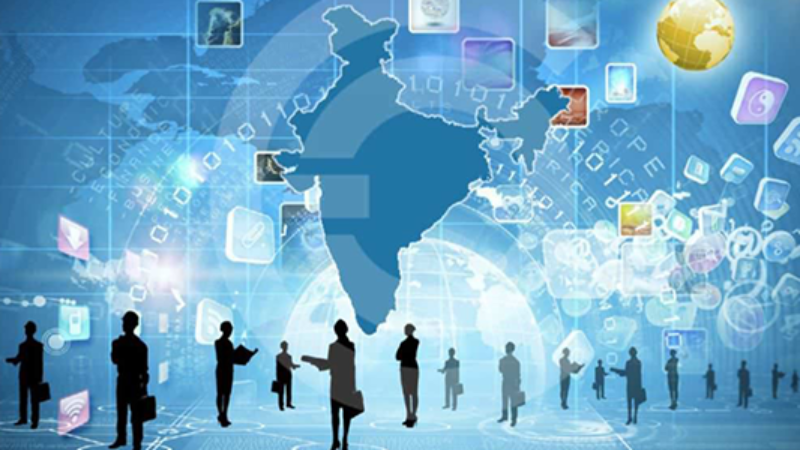Digital India – Demonetization – Digitally Empowered
Technology has become a part and parcel of our day-to-day life. There is no day in this present age when technology is not used. Starting a day with technology and ending it by one, technology has been used in some or the other way these days. “Smart technology” is that familiar terminology which is widely being used in every being’s life today. Smartphones, tablets, gadgets, smart televisions, etc., are the products of smart technology that have made human life smarter, easier and accessible. Smart technology has not only enhanced the way of living but also became an integrated part of everyone’s life.
With the technology transformation clinching in every inch of the world, it was time for developing countries like India to embrace this transition in order to survive the race. While digital transformation has enabled many countries to progress economically and globally in every diverse field, it was India’s turn to take the baby’s steps in 2015. With a vision to transform India into a digitally empowered society and the knowledge economy, the prime minister of India, Shri Narendra Modi Ji, launched the Digital India Programme on July 1, 2015.
The Digital India programme is a campaign launched by the Government of India to ensure that the government services are made available to citizens electronically by improved online infrastructure and by increasing internet connectivity or by making the country digitally empowered in the field of technology. Ever since the launch of the programme, the prime minister’s dream of a ‘Digital India’ has been moving towards its goal with quick pace, with many states enjoying the perks of adopting digital systems. Starting from health care system, education, online business to the electronic Vidhan system of the state assembly, the flagship programme has completely changed the fate of the states.
In what could be termed as a historic moment in the face of India, Demonetization was yet another pivotal subject that shook the entire nation further persuading them to cling to Digital India. Demonetization was the most popular and enchanted terminology then which has become the talk of the town ever since the announcement made by the government on November 8, 2016, to cancel the legal tender of Rs 500 and Rs 1,000 notes. The move has come as a surprising and unprecedented step from the honorable prime minister with a historic effort to clean up the decades-long corruption and black money that has left the entire nation in awe.
The demonetization drive by the prime minister to achieve a digital economy by going cashless had a positive impact on many firms and organizations. Every small business or firm inculcated the practice of digital transactions. Ever since the announcement made, payment gateways were on the rise and few became the nucleus. Starting from a tea or vegetable vendor to Flipkart or Amazon or any other reputed vendors, mobile wallets were for everyone. Standing in favor of the decision was the Education sector that cast its vote too for a digital economy.
Consider the old days wherein one had to stand in long queues at the banks for the financial transactions, the days when there was no proper diagnosis of the disease and no adequate infrastructure for medical surgery, where one had to turn to the malls or stores to buy the grocery or clothes or any other essential goods. Technology has changed the entire scenario now; banking transactions can be done from our smartphones with many conveniences, major surgeries can be performed with the collaboration of famous surgeons across the world through video conference and you can shop and buy your favorite goods from your home. With the advent of the internet in schools and widespread adoption of technology in the same, smart schools are the new face of education now.
This has digitally empowered citizens and businesses to get accustomed to the technology practices further impacting the economy. The broadband connectivity in all Panchayats, Wi-fi in schools and universities, Wi-Fi in public transports, Public Wi-Fi hotspots with 5th generation networking speed has influenced citizens to march forward towards Digital India. The robust usage of technology by the nation has made India Digitally empowered and also the leader in usage of information technology in the delivery of services related to various domains such as health, education, agriculture, banking, etc.

